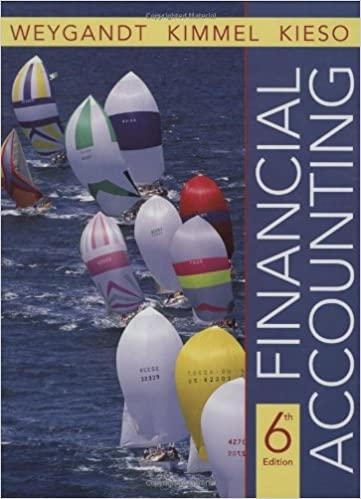

Homework: Chapter 15 HW-F20 Save Score: 0 of 1 pt 3 of 3 (2 complete) HW Score: 66.67%, 2 of 3 pts E15-24 (similar to) Question Help Lidster Corporation has three divisions: pulp, paper, and fibers. Lidster's new controller, Kevin Miller, is reviewing the allocation of fixed corporate-overhead costs to the three divisions. He is presented with the following information for each division for 2020: E: (Click the icon to view the data.) Until now, Lidster Corporation has allocated fixed corporate-overhead costs to the divisions on the basis of division margins. Miller asks for a list of costs that comprise fixed corporate overhead and suggests the following new allocation bases: (Click the icon to view the fixed corporate overhead and new allocation bases.) Read the requirements Requirement 1. Allocate 2020 fixed corporate-overhead costs to the three divisions using division margin as the allocation base. What is each division's operating margin percentage (division margin minus allocated fixed corporate-overhead costs as a percentage of revenues)? Allocate the fixed corporate-overhead costs, then calculate the division operating margins in dollars and as a percentage of revenue. (Round allocation proportions to one decimal place, X.X%, and dollar amounts to the nearest dollar. Enter operating margin percentages to one decimal, X.X%.) Pulp $ 2,500,000 Paper 7,200,000 Fibers $ 10.300.000 Division margin $ Requirements Data Table Allocated fixed corporate-overhead Operating margin Operating margin % % Pulp Fibers $ Revenues Direct manufacturing costs 9,600,000 $ 3,800,000 3,300,000 Paper 16,900,000 $ 7,700,000 2,000,000 25,900,000 10,900,000 4,700,000 1. Allocate 2020 fixed corporate-overhead costs to the three divisions using division margin as the allocation base. What is each division's operating margin percentage (division margin minus allocated fixed corporate-overhead costs as a percentage of revenues)? 2. Allocate 2020 fixed costs using the allocation bases suggested by Miller. What is each division's operating margin percentage under the new allocation scheme? 3. Compare and discuss the results of requirements 1 and 2. If division performance incentives are based on operating margin percentage, which division would be most receptive to the new allocation scheme? Which division would be the least receptive? Why? 4. Which allocation scheme should Lidster Corporation use? Why? How might Miller overcome any objections that may arise from the divisions? Division administrative costs $ 2,500,000 $ 7,200,000 $ 10,300,000 Division margin Number of employees Floor space (square feet) 320 240 1,040 48.600 34,200 97,200 Data Table Print Done Fixed Corporate-Overhead Costs Human resource management $ Facility Suggested Allocation Bases 1,600,000 Number of employees 3,100,000 Floor space (square feet) 4,600,000 Division administrative costs 9.300.000 Corporate administration $ Total Print Done Enter any number in the edit fields and then click Check Answer. 4 parts Clear All Check Answer remaining Homework: Chapter 15 HW-F20 Save Score: 0 of 1 pt 3 of 3 (2 complete) HW Score: 66.67%, 2 of 3 pts E15-24 (similar to) Question Help Lidster Corporation has three divisions: pulp, paper, and fibers. Lidster's new controller, Kevin Miller, is reviewing the allocation of fixed corporate-overhead costs to the three divisions. He is presented with the following information for each division for 2020: E: (Click the icon to view the data.) Until now, Lidster Corporation has allocated fixed corporate-overhead costs to the divisions on the basis of division margins. Miller asks for a list of costs that comprise fixed corporate overhead and suggests the following new allocation bases: (Click the icon to view the fixed corporate overhead and new allocation bases.) Read the requirements Requirement 1. Allocate 2020 fixed corporate-overhead costs to the three divisions using division margin as the allocation base. What is each division's operating margin percentage (division margin minus allocated fixed corporate-overhead costs as a percentage of revenues)? Allocate the fixed corporate-overhead costs, then calculate the division operating margins in dollars and as a percentage of revenue. (Round allocation proportions to one decimal place, X.X%, and dollar amounts to the nearest dollar. Enter operating margin percentages to one decimal, X.X%.) Pulp $ 2,500,000 Paper 7,200,000 Fibers $ 10.300.000 Division margin $ Requirements Data Table Allocated fixed corporate-overhead Operating margin Operating margin % % Pulp Fibers $ Revenues Direct manufacturing costs 9,600,000 $ 3,800,000 3,300,000 Paper 16,900,000 $ 7,700,000 2,000,000 25,900,000 10,900,000 4,700,000 1. Allocate 2020 fixed corporate-overhead costs to the three divisions using division margin as the allocation base. What is each division's operating margin percentage (division margin minus allocated fixed corporate-overhead costs as a percentage of revenues)? 2. Allocate 2020 fixed costs using the allocation bases suggested by Miller. What is each division's operating margin percentage under the new allocation scheme? 3. Compare and discuss the results of requirements 1 and 2. If division performance incentives are based on operating margin percentage, which division would be most receptive to the new allocation scheme? Which division would be the least receptive? Why? 4. Which allocation scheme should Lidster Corporation use? Why? How might Miller overcome any objections that may arise from the divisions? Division administrative costs $ 2,500,000 $ 7,200,000 $ 10,300,000 Division margin Number of employees Floor space (square feet) 320 240 1,040 48.600 34,200 97,200 Data Table Print Done Fixed Corporate-Overhead Costs Human resource management $ Facility Suggested Allocation Bases 1,600,000 Number of employees 3,100,000 Floor space (square feet) 4,600,000 Division administrative costs 9.300.000 Corporate administration $ Total Print Done Enter any number in the edit fields and then click Check Answer. 4 parts Clear All Check Answer remaining








